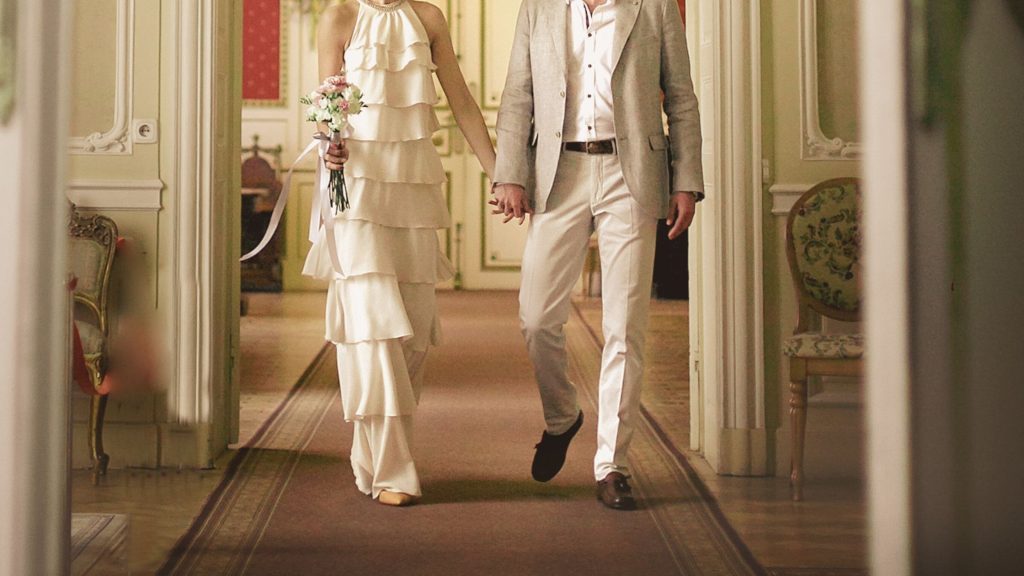Vintage fashion has always had a lasting charm, with its unique styles and timeless appeal. However, building a vintage-inspired wardrobe can often seem daunting, especially when you’re on a budget. But fear not! With a little creativity, patience, and resourcefulness, it’s entirely possible to create a vintage-inspired wardrobe without breaking the bank. This article will guide you through the process, providing tips and tricks to help you curate your dream vintage wardrobe on a budget.
Define your vintage style

Before diving into the world of vintage fashion, it’s important to define the specific era or style that resonates with you the most. Whether you’re drawn to the glamorous 1920s flapper look or the bohemian vibes of the 1970s, having a clear vision will make your vintage shopping journey more focused and efficient.
To put it simply, vintage style is all about taking inspiration from the past and incorporating it in to your look today. This could mean raiding your grandma’s closet for old-fashioned pieces, or simply incorporating vintage-inspired designs in to your current wardrobe.
There are so many different ways to achieve a vintage look, and no single style is right for everyone. Some people might prefer to go for a more retro look, while others might prefer a more classic vintage style. It really all depends on your personal preferences.
One thing to keep in mind when creating a vintage look is that it should always be flattering and age-appropriate. It’s important to avoid looking like you’re trying too hard or like you’re dressing up for a costume party. A well-executed vintage style should look like it’s just what you naturally gravitate towards.
Research and educate yourself

Knowledge is power when it comes to vintage fashion. Familiarize yourself with different eras, designers, and iconic fashion trends. This will enable you to identify authentic vintage pieces and make informed decisions while shopping. Utilize online resources, books, and documentaries to expand your understanding of vintage fashion.
Thrift stores and second-hand shops
Thrift stores are a treasure trove for vintage enthusiasts on a budget. Explore local thrift stores, consignment shops, and vintage boutiques in your area. Keep in mind that patience is key when thrift shopping; it may take multiple visits before finding that perfect vintage gem. Don’t be afraid to dig through racks, as you never know what hidden treasure you might uncover.
are a great place to find unique pieces of clothing and accessories at a fraction of the cost of buying them new. However, it can be difficult to find stylish and fashionable clothing at a thrift store. With a little bit of know-how, you can find great pieces at thrift stores that will help you build a stylish and fashionable wardrobe on a budget.
Here are a few tips for finding stylish clothing at a thrift store:
- – Look for classic pieces that will never go out of style. A black blazer, a white blouse, a pair of straight leg jeans, and a little black dress are all pieces that you can wear time and time again and that will never go out of style.
- – Pay attention to the fit of the clothing. Thrift store clothing can often be hit or miss when it comes to fit. Be sure to try on everything before you buy it to make sure that it fits well.
- – Look for unique pieces Estate sales and garage sales can be a great place to find unique pieces of clothing that you won’t find at a regular thrift store. – Be prepared to do some repairs. A lot of thrift store clothing is stained, ripped, or in otherwise poor condition. Be prepared to do some repairs before you wear it.
- Estate sales and garage sales are a goldmine for vintage clothing, accessories, and even designer pieces. Keep an eye on local listings or online platforms that advertise such sales in your area. Arrive early to get the best selection and negotiate prices if possible. Be prepared to haggle, as sellers often want to get rid of items quickly.
Online vintage marketplaces

The internet has revolutionized the way we shop, and vintage fashion is no exception. Online vintage marketplaces like Etsy, eBay, Depop, and Poshmark offer an extensive range of vintage clothing and accessories at various price points. Utilize search filters, set up alerts, and browse through different sellers to find the best deals. Read customer reviews and check seller ratings to ensure a trustworthy and reliable shopping experience.
are a great way to find unique pieces of clothing that are no longer being made. You can find pieces from all different time periods, and you can find pieces from all over the world. The downside to online vintage marketplaces is that the prices can be a bit high, and the selection can be a bit limited.
One of my favorite online vintage marketplaces is Etsy. Etsy is a great place to find unique, handmade pieces. You can find everything from clothes to jewelry to home decor on Etsy. The prices on Etsy vary, but most pieces are fairly affordable.
Another great online vintage marketplace is eBay. eBay is a great place to find vintage clothes from all different time periods. You can also find a wide variety of brands on eBay. The prices on eBay vary, but most pieces are fairly affordable.
Finally, my third favorite online vintage marketplace is Depop. Depop is a great place to find unique pieces from all over the world. The prices on Depop are usually a little higher than on other marketplaces, but the selection is unbeatable. I’ve found some really great pieces on Depop, including a vintage Chanel bag and a pair of Miu Miu shoes.
DIY and upcycling
One of the most budget-friendly ways to create a vintage-inspired wardrobe is through DIY projects and upcycling. Transform thrifted pieces by altering their size, adding embellishments, or repurposing them into something entirely new. YouTube tutorials, sewing blogs, and Pinterest boards are great resources for DIY inspiration and guidance.
Borrow from family and friends

Vintage fashion often holds sentimental value for many people. Reach out to family members, particularly older relatives, and ask if they have any vintage clothing or accessories tucked away in their closets. Borrowing items not only adds authenticity to your vintage wardrobe but also strengthens family connections and stories.
Swap parties and clothing exchanges
Organize a clothing swap party with friends or fellow vintage enthusiasts. Everyone brings unwanted clothing, and you can exchange items to refresh your wardrobe without spending a dime. It’s a fun and sustainable way to update your style while also fostering a sense of community.
are a great way to get new-to-you clothes without spending any money. Plus, they’re a lot of fun! Here’s how to throw a swap party:
- 1. Invite your friends!: The more the merrier when it comes to swap parties. Invite everyone you know, and watch the party grow!
- 2. Collect clothing donations : In order for the swap party to be a success, you’ll need to collect donations from your friends. Ask them to bring clothing they no longer want or need.
- 3. Set up a swap station: Set up a table or area where your friends can drop off their donations. Make sure there’s enough space for everyone to browse through the clothes.
- 4. Get ready to swap!: Once everyone has arrived, it’s time to start swapping! Make sure to bring your own clothes to trade, too.
- 5. Have fun!
Sales, discounts, and off-season shopping
Keep an eye out for sales, discounts, and off-season shopping opportunities. Many vintage stores and online marketplaces offer discounts during specific periods or have clearance sections. Sign up for newsletters and follow social media accounts of your favorite vintage sellers to stay updated on the latest deals.
Summer is officially over, and that means the start of the fall shopping season. Many stores have already rolled out their fall discounts, and more will follow in the coming weeks. If you’re looking for a good deal, now is the time to start shopping.

But where should you start? Here are a few tips to help you get the best deals this fall:
- • Look for sales. Many stores offer discounts in the fall, so be sure to check out the sales section of your favorite retailers.
- • Shop off-season. Many items are cheaper in the fall because it’s not the peak shopping season. So if you can wait to buy winter clothes, for example, you’ll likely save some money.
- • Use coupons. Coupons are a great way to get discounts on your favorite items. Be sure to check out the coupons section of your favorite stores’ websites.
- • Shop online. Shopping online is a great way to get discounts on your favorite items. Many online stores offer discounts on items, and some offer free shipping, too.
- • Follow your favorite stores on social media. Many stores offer discounts to their followers on social media. Be sure to follow your favorite stores on Facebook, Twitter, and Instagram to get the latest discounts.
- • Sign up for store loyalty programs. Many stores offer loyalty programs that give you discounts on your favorite items. Be sure to sign up for your favorite stores’ loyalty programs to get the best discounts.
Accessories and details
Building a vintage-inspired wardrobe doesn’t solely rely on clothing. Accessories and details play a crucial role in completing the look. Look for vintage-inspired jewelry, hats, scarves, belts, and shoes to enhance your outfits. These smaller pieces can be found at affordable prices and instantly elevate your overall vintage aesthetic.
Quality over quantity
When working with a budget, it’s essential to focus on quality rather than quantity. Invest in well-made and timeless pieces that can be mixed and matched to create various outfits. Look for natural fabrics like cotton, silk, and wool, as they tend to age better and have a more authentic vintage feel.
Tailoring and alterations
Don’t let ill-fitting vintage finds discourage you. Many vintage pieces can be tailored and altered to fit your body shape and personal style. Find a trusted tailor or learn basic sewing skills to make necessary adjustments. This way, you can make the most of your vintage treasures and ensure they flatter your figure perfectly.
Take care of your vintage pieces
Vintage clothing requires special care to maintain its longevity. Follow care instructions carefully, hand wash delicate items, and store them in a cool, dry place away from direct sunlight. Proper maintenance will minimize the need for frequent replacements and preserve your vintage treasures for years to come.
Conclusion
Building a vintage-inspired wardrobe on a budget is a thrilling and rewarding experience. It allows you to express your personal style while embracing the nostalgia and uniqueness of bygone eras. Remember, patience, persistence, and a keen eye for hidden gems are key. So, get started on your vintage journey and let your budget-friendly wardrobe shine with timeless elegance.





